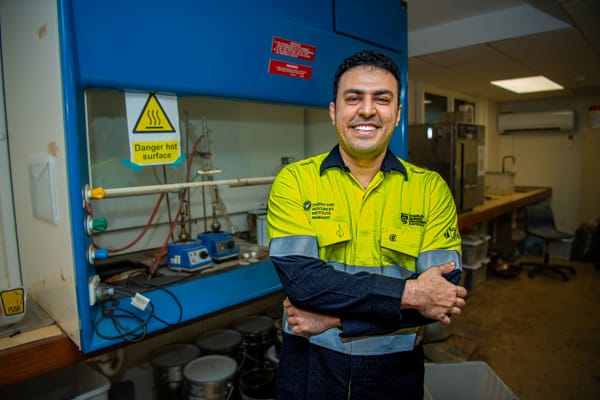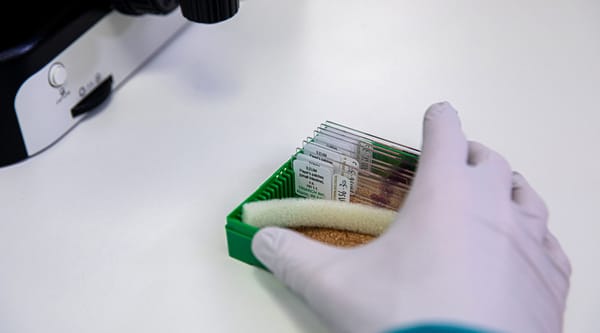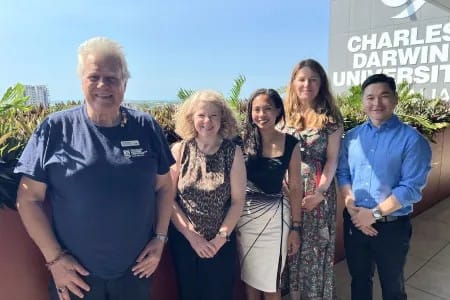Teacher transformation scores top marks
A new way of teaching has helped turn the tables at Cessnock High School. The results speak for themselves.
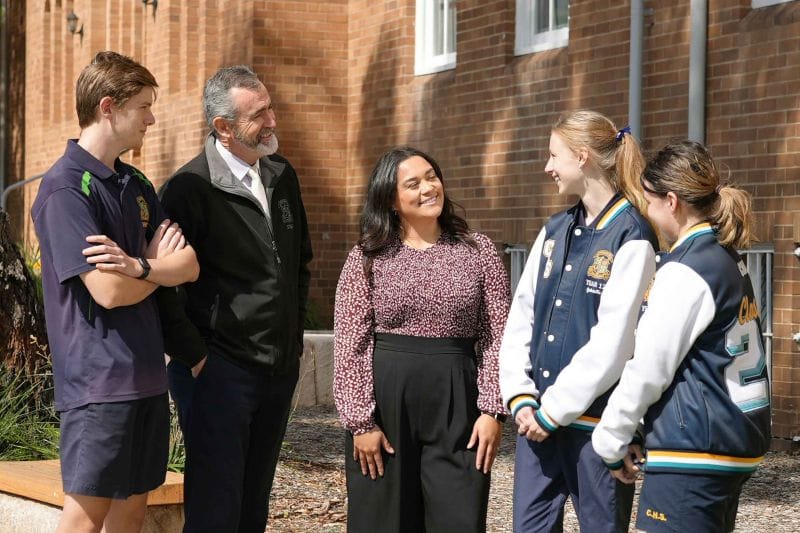
First published by the University of Newcastle
By Madelaine Love
“Shhhhhhhhh, Miss is coming!”
A hurried silence falls upon a group of teens, huddled close with heads down, averting eye contact. It was once an all too familiar scene for local high school teacher Kelsey Kisina as she approached students in the hallways or playgrounds of Cessnock High School, where an ‘us against them’ mentality had firmly taken root.
“I remember when I first started, it was not a very welcoming environment. And that's not a comment on the teachers. But it was very much ‘teachers versus students’,” says Kelsey.
“It felt like a battle each day.”
But something remarkable has happened at the school, which experiences one of the highest levels of socio-economic disadvantage in the region.
Now, students stop to chat with their teachers about plans for the weekend. The school uniform, once unenthusiastically tolerated – if worn at all – has become a source of student pride.
And while these changes might seem superficial, they’re representative of a much more significant transformation.
In 2023, the school ranked first in the Hunter region and 11th in the state for its growth in NAPLAN results from Year 7 to 9. HSC results also improved by more than 50 per cent.
Student attendance and engagement grew by seven per cent – triple the average across the state. Positive behaviour referrals were up 130 per cent, while negative behaviours significantly decreased.
So what’s behind such meteoric improvement?
In large part, the answer is teaching. More specifically, quality teaching.


For the past four years, Cessnock High School has partnered with the University of Newcastle to roll out its award-winning Quality Teaching Rounds (QTR) program to every teacher at the school.
Developed by Laureate Professor Jenny Gore and colleagues, the program empowers teachers to draw on their collective strengths – and the advice of their peers – to find creative ways to improve their teaching practice.
For Kelsey and the teachers at Cessnock High, it’s been a revelation.
“For such a long time, I was just in survival mode. ‘How can I keep these kids entertained for today?’ ‘How can I get through this period?’, and that's how I operated as a teacher starting out,” reflects Kelsey.
“I guess the teaching and learning for me kind of fell to the background. And the QTR program brought everything to the forefront. It was a realisation that the way to engage these kids is through quality lessons – it’s about making it significant for them.”
It was a full-circle moment for Kelsey. As the first in her family to attend university, she experienced first-hand the power of quality education to break cycles of disadvantage.
“I grew up in a very low-income household. We moved around a lot. I always had the stability of school, and I really needed that stability,” she says.
Most of us have memories of a favourite teacher – someone who made learning feel easy – and for Kelsey that was Mrs Corlis, her modern history teacher.
“I loved going to her classes each day. And one of the things she did that was different to my other teachers was she made the learning really significant. Being modern history, a lot of our content was connected to current affairs or the news at the time, and that was something that she always tried to link in for us,” she says.
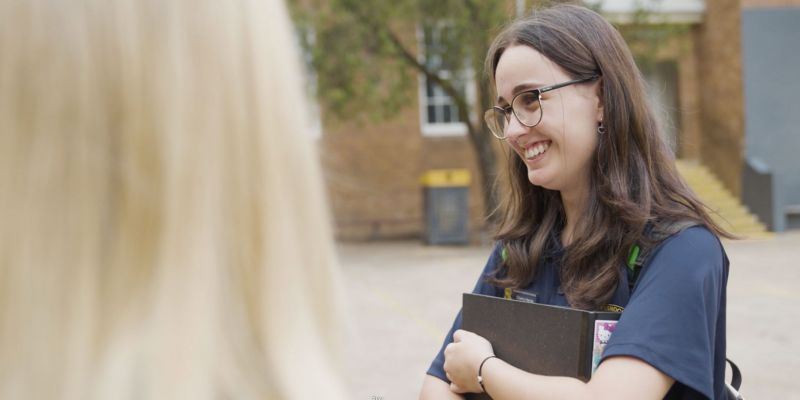






A typical QT round
In groups of four, teachers dedicate an entire day to each ‘round’ within the QTR program. Each teacher takes a turn hosting a round.
First up, the host teacher brings to the group a piece of research, news article, policy document or even a TED talk that has inspired them – and they start a conversation.
“I remember in my first round, someone had chosen a TED Talk about the fact that every kid deserves a champion. The conversation that took place after we watched that video was really powerful. And appropriate for us, because some of our kids don't have champions outside of our school,” says Kelsey.
Next up, the teachers sit in on a lesson taught by the host teacher.
“You watch the lesson from start to finish, and you take notes and ‘code’ using the Quality Teaching Model,” says Kelsey.
“One of the things I really liked about the model is that we're not coding the teacher, we're coding the lesson.”
In the afternoon, the teachers reconvene to share their observations, and discuss where there might be opportunities to get those codes higher.
“And then it’s just rinse and repeat,” explains Kelsey.



A more empowered teaching community
At its core, the QTR approach has been designed to support teachers to support each other.
“We treat teachers as professionals and, knowing their own students and their own schools, we recognise their capacity to support each other in figuring out how to deliver the best possible outcomes for their kids,” says QTR Founder, Laureate Professor Jenny Gore.
“We’re empowering teachers to empower each other,” she explains.
For the teachers at Cessnock High, it’s also been about building community.
“In my first three years here, I couldn't tell you what science were doing in their classrooms, or what Mr Atkinson in math was teaching, or his strategies,” says Kelsey.
“But we've reached a place now where we are a community – a learning community. Nowadays, I would not hesitate to go and knock on the PE department’s door and ask ‘What are you guys doing this term? What skills you're looking at? How can I support that on my end?’.”
“It's very much that team approach now. And it creates a space for teachers to connect and learn from each other outside of our faculties, which is really great. It's good for morale,” she says.
Quality teaching = improved student outcomes
The impact of the QTR program at Cessnock High leaves no doubt that happier, more empowered teachers mean better outcomes for students – the spectacular rise in NAPLAN and HSC results speak for themselves.
But it’s more than just stats and figures. The program has contributed to a shift in the school that can be hard to put into words.
“I don't even really know how to explain it, it's just a lot different. But I think it's a very good change,” says Year 12 student Charlotte.
“I want to be a teacher, so it's been very influential for me personally – just seeing all of these teachers who are genuinely like, so passionate, and so good at what they do, and them pushing me to do what I want to do, and just going ‘Yeah, you can do this,’” she says.


Year 12 student Jayden has also felt the change.
“I've noticed a massive improvement in teaching since Year 7,” he says.
“There's a lot more of a student/teacher connection than there used to be – that’s definitely improved. And a lot more guided learning.”
On the importance of quality teaching, Jayden sums things up perfectly.
“School is a massive part of everyone's life. So having quality teaching definitely benefits you. It sets you up for life.”
Expanding the program
When Cessnock High approached the University about a QTR partnership, Jenny Gore and her colleagues were two years in to a five-year program of research funded by the Paul Ramsay Foundation (PRF) and supported by the NSW Department of Education (DOE).
The Building Capacity for Quality Teaching in Australian Schools (2019-2023) project was monumental – a series of randomised controlled trials including the largest in Australian education research history.
These trials involved 1,400 teachers and 14,500 students from 430 schools across NSW, Victoria and Queensland.
And the results were remarkable. Schools where teachers had completed the QTR program saw student academic achievement in mathematics and reading grow by as much as three months more in a school year than students whose teachers had not participated in QTR. The results were even stronger in settings where students were at greater socio-educational disadvantage.
Using the success at Cessnock High as a blueprint, the University is now set to partner with 25 more NSW schools in similarly disadvantaged areas to roll out the QTR program.
Led by the University’s Dr Drew Miller, the $4.3m Thriving Schools project is again funded by the Paul Ramsay Foundation (PRF) with support from the NSW Department of Education.
“The core business of teachers is teaching and learning. But in these more complex schools, teachers’ energies are often channelled in many directions which limits the time they have to focus on high-quality classroom practice,” explains Drew.
Every school is different, and many have different needs. With that in mind, the team at the University of Newcastle will work together with each individual school to tailor the rollout of the QTR program in a way that works for them.
“It’s a real opportunity for us to engage with schools in low socio-economic communities to try and create change. And that’s really hard. Changing anything in these schools is hard because of the profound social inequities facing those communities,” says Drew.
“Helping generate change is our key focus, and it's a real honour to be able to do it.”

Solving the teacher shortage
There’s no denying Australian schools are facing unsustainable pressures. As Laureate Professor Gore puts it, too many students are falling behind and there are not enough teachers to teach them.
“Meanwhile, the teachers we do have are stressed, overworked, and lack adequate support in the classroom,” she says.
So, what is the recipe for attracting teachers back to the profession?
Happier and more empowered teachers. Dramatically improved student outcomes. More connected school communities. All demonstrated outcomes of the QTR program.
“The results we’re seeing from schools that have undertaken the QTR program can address the most pressing concerns right now – supporting the teaching workforce and achieving excellence and equity for Australian students,” says Jenny.
Every kid deserves a champion
Back in the library at Cessnock High, Kelsey stands chatting to some of her Year 12 students. There is an obvious warmth there – a mutual respect that shines through the banter.
If quality teaching is the backbone of our society, then teachers like Kelsey are its beating heart .
“It’s my job to try and inspire students to think bigger than our community, think bigger than these part-time jobs that traditionally a lot of our kids would leave school for,” she says.
“And just trying to teach them: ‘Set some really high goals for yourself, because you can do it. You can reach for the stars’. And I guess that connects to my own story as well – that it's okay to do something different.”
As the QTR program is expanded across the state, it’s important to recognise its impacts reach far beyond just the schools themselves.
“We are really proud of the results we have achieved so far,” says Cessnock High School Principal Peter Riley.
“We’re not just trying to help kids through school here, we’re trying to help the Cessnock community by producing kids who are capable of getting quality jobs, being able to operate as a community member, and adding to our community,” he says.
It feels appropriate – in a story about teachers – to let Kelsey have the last word.
“Education is everything for these kids. Education can change people's lives,” she says.
“It changed my life.”
Learn more about the groundbreaking QTR program here.

